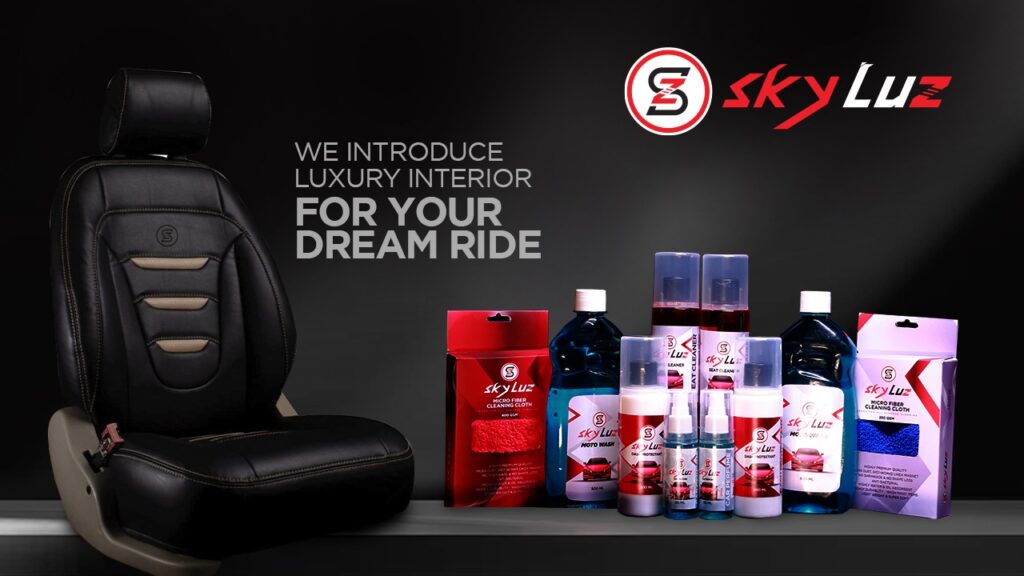Best Ways to Remove Hard Water Stains from Your Car
Water spots may seem like a small issue, but they can ruin the appearance of your car’s paint, glass, and even chrome parts. Among the different types of stains your vehicle might face, hard water spots are the most stubborn. Improper removal or ignoring them over time can lead to permanent etching and expensive repairs.
In this blog, you’ll learn exactly what causes hard water spots, the best methods to remove them, and most importantly, how to prevent them from forming again. Whether you’re a DIY car care enthusiast or prefer professional detailing, this guide will help you protect your vehicle’s shine.
🚿 What Are Hard Water Spots?
Hard water contains a high concentration of minerals like calcium and magnesium. When this water evaporates from your car’s surface, it leaves behind mineral deposits that bond with the surface. These deposits appear as white, chalky, or cloudy rings and are often visible on:
-
Car paint
-
Glass (especially windshields)
-
Chrome trims
-
Plastic trims
🔍 Types of Water Spots:
-
Type I – Regular mineral deposits: Most common and removable with simple cleaners.
-
Type II – Etched water spots: When minerals react with paint over time, causing corrosion or micro-etching.
-
Type III – Bonded spots with contaminants: Often mixed with dirt, acid rain, or pollutants. Tougher to remove.
❗ Why You Should Remove Water Spots Immediately
-
Prevent permanent damage: If left untreated, they can etch into clear coat or glass.
-
Affects visibility: Water spots on windshields or side mirrors reduce visibility and can be dangerous.
-
Ruins appearance: Even the cleanest car looks dirty with spotted paint or glass.
-
Degrades resale value: Poor maintenance shows and can affect potential buyer impressions.
🧼 Tools & Materials You’ll Need
Depending on the severity, you’ll need some or all of the following:
-
Distilled water
-
White vinegar
-
Lemon juice
-
Water spot remover (commercial product)
-
Detailing clay bar
-
pH-neutral car shampoo
-
DA polisher (for severe cases)
-
Polish or compound
-
Ceramic coating (for future protection)
✅ How to Remove Hard Water Spots – Step-by-Step
🔹 Step 1: Wash Your Car Thoroughly
Start with a proper wash using pH-balanced car shampoo and clean water. Rinse off any dirt, dust, or debris before working on the water spots.
Tip: Always wash your car in a shaded area to prevent water from drying too quickly.
🔹 Step 2: Try the Vinegar Solution (DIY)
White vinegar is mildly acidic and dissolves mineral deposits.
Steps:
-
Mix equal parts white vinegar and distilled water in a spray bottle.
-
Spray directly on the affected area.
-
Let it sit for 30–60 seconds.
-
Wipe off with a clean microfiber towel.
-
Rinse the area with clean water.
Note: Avoid vinegar on raw metal, sensitive plastics, or unprotected paint.
🔹 Step 3: Use a Commercial Water Spot Remover
For stubborn spots that DIY methods don’t fix, use a specialized water spot remover. These are formulated to dissolve minerals without harming clear coat or glass.
How to apply:
-
Use a foam applicator pad or microfiber.
-
Apply small amounts and work in circular motions.
-
Buff with a clean towel and rinse.
Popular brands include:
-
Meguiar’s Water Spot Remover
-
Chemical Guys Water Spot Gel
-
CarPro Spotless
🔹 Step 4: Clay Bar Treatment
If you can feel the spots even after cleaning, they might be bonded to the paint. A clay bar treatment can help.
Steps:
-
Lubricate the surface with clay lubricant or car shampoo + water mix.
-
Glide the clay bar gently over the area.
-
Repeat until the surface feels smooth.
-
Wipe clean with a microfiber towel.
🔹 Step 5: Polish for Etched or Severe Spots
For Type II or III water spots, you may need a machine polisher with light polish or compound.
Use:
-
A dual-action (DA) polisher with foam pad.
-
Apply compound/polish and work in 2×2 ft sections.
-
Use medium pressure and overlap strokes.
Warning: Avoid polishing if you’re unsure; improper polishing can damage clear coat. Consider professional help from detailing experts like Skywheelz Detailing Hut, Thrissur.
🛡️ How to Prevent Water Spots in the Future
1. Avoid Washing in Direct Sunlight
Water dries quickly under sunlight, leaving spots behind.
2. Use Filtered or Soft Water
Installing a water softener or filter system for your home car wash setup helps greatly.
3. Dry Your Car Immediately
Use a microfiber drying towel or air blower after washing. Don’t let water sit on the surface.
4. Apply Ceramic Coating
Ceramic coating adds a hydrophobic layer, making water bead off and reducing the risk of spotting. Visit Skywheelz Ceramic International for professional ceramic coating in Thrissur.
5. Use a Quick Detailer Spray
A waterless wash or quick detailer can be used after rain or spotting to remove fresh mineral deposits before they dry.
Why Choose Professional Detailing at Skywheelz?
If hard water spots have become too severe or you’re unsure about DIY polishing, bring your car to Skywheelz – Thrissur’s trusted detailing hub.
What you get:
-
Expert inspection and surface assessment
-
Professional-grade water spot removers and compounds
-
Paint-safe polishing and finishing
-
Advanced ceramic coating solutions
-
Glass polishing for crystal-clear visibility
📍 Visit us today for a free consultation and say goodbye to water spots!
Final Words

Hard water spots are not just a cosmetic issue—they can permanently damage your car’s paint and glass. The key is early removal, using the right methods, and protecting your vehicle with proper coatings.
Remember:
-
Always use distilled water where possible
-
Act quickly before spots etch permanently
-
Choose professional help if stains are severe
Don’t let hard water ruin your ride. Stay spotless. Stay protected.
